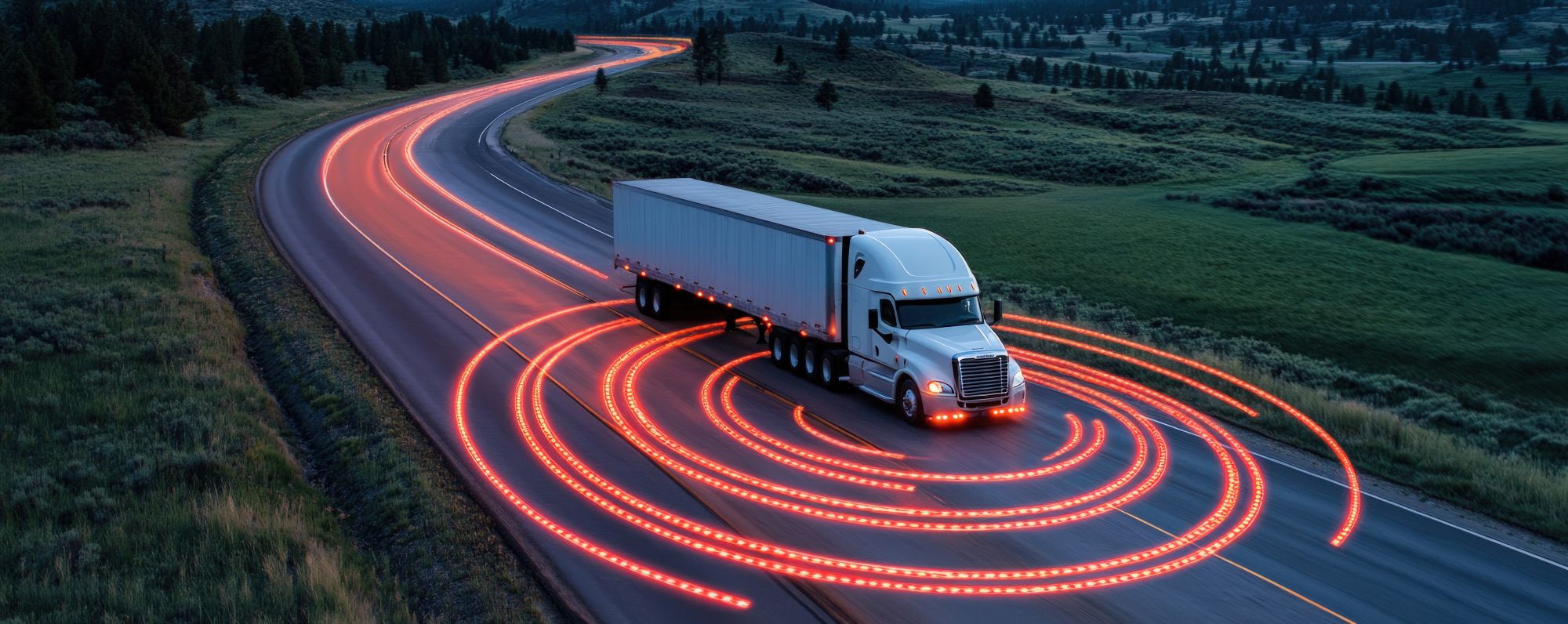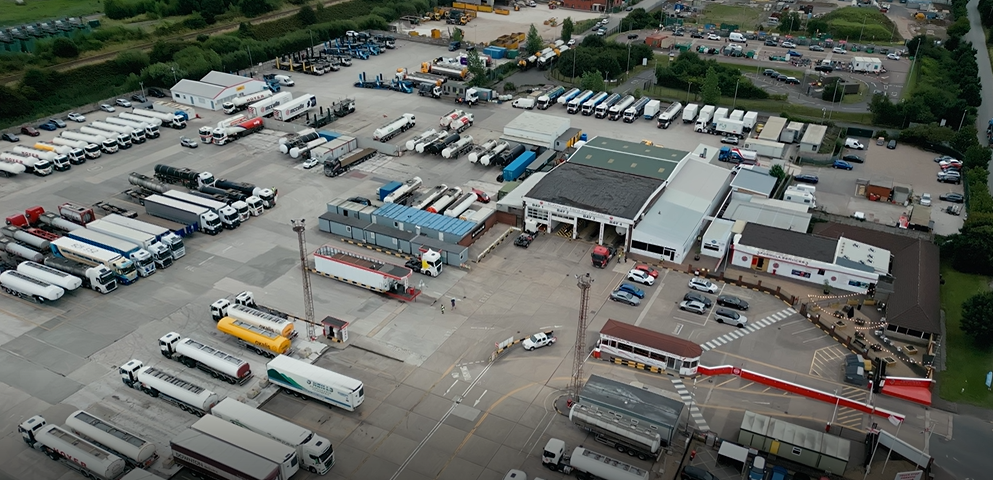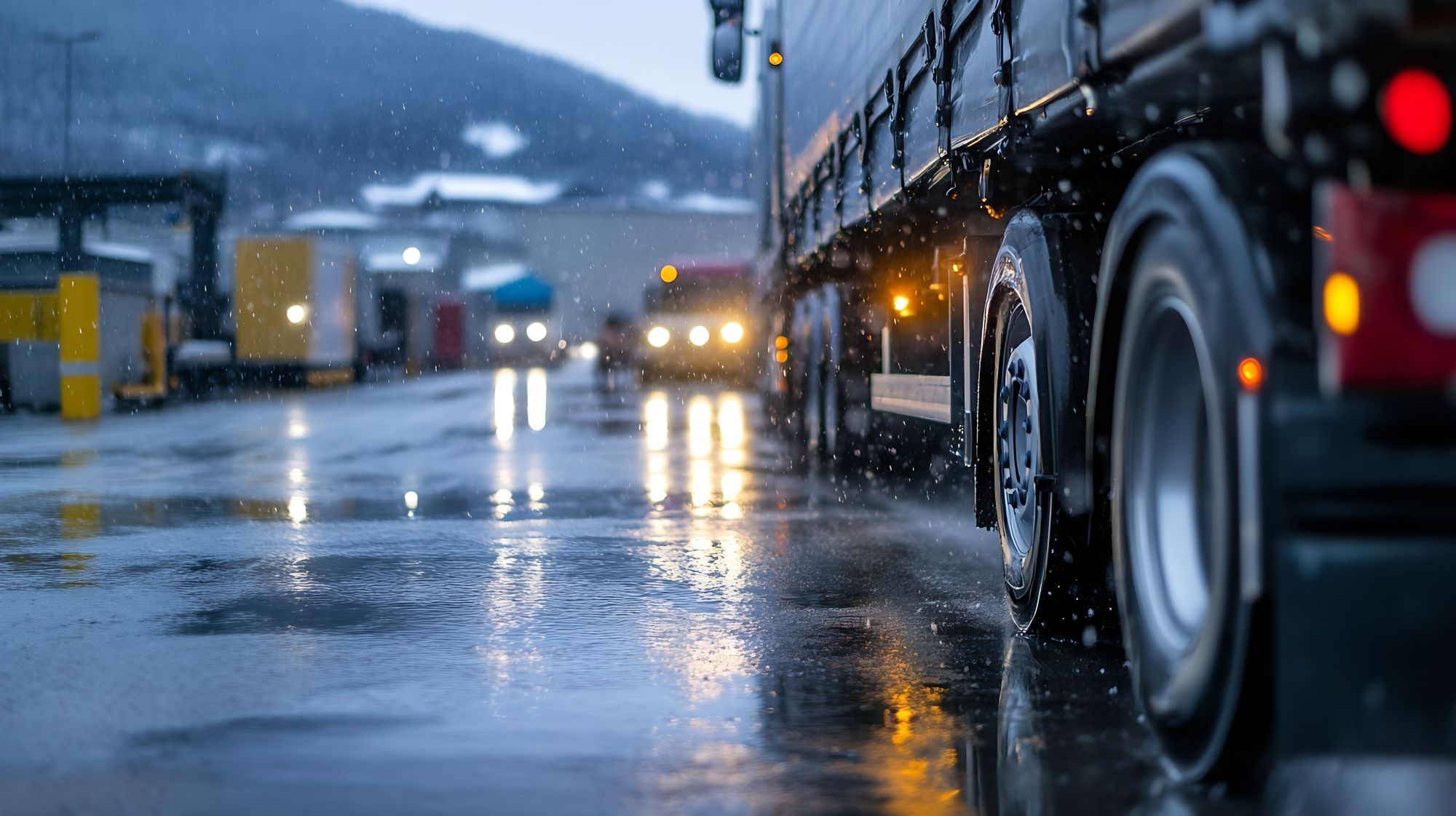
Susie Jones
Autonominiai sunkvežimiai: Kelias į priekį: kaip išsiaiškinti, kas laukia ateityje
Sukurta: 16-05-2025
•
Atnaujinta: 23-05-2025
Autonominiai sunkvežimiai - kai kam bauginanti idėja, tačiau, regis, tai logistikos pramonės ateitis. Tobulėjant šio sektoriaus technologijoms, iš dalies arba visiškai autonominių transporto priemonių, pristatančių jūsų prekes, perspektyva yra didelė. Tiesą sakant, Jungtinės Karalystės vyriausybės duomenimis, tai gali įvykti jau 2026 m., nes 2024 m. gegužę įsigaliojo Automatizuotų transporto priemonių (AV) įstatymas.
Tačiau kas atsitinka, kai autonominis sunkvežimis patenka į avariją? Kas už tai atsako? Šiame tinklaraštyje gilinsimės į autonomijos pasaulį, kaip ji gali paveikti judumo sektorių, kas atsako už nelaimingus atsitikimus ir ką apie šiuos pokyčius mano vairuotojai.
Kokie yra skirtingi automatizavimo lygiai?
Yra šeši vairavimo automatizavimo lygiai:
0 lygis - nėra automatizavimo. Žmogus atlieka visas vairavimo užduotis.
1 lygis - pagalba vairuotojui. Transporto priemonėje įdiegta viena automatinė sistema.
2 lygis - dalinis automatizavimas. Transporto priemonė gali vairuoti ir greitėti. Tačiau žmogus vis dar stebi visas užduotis ir gali bet kada perimti valdymą.
3 lygis - sąlyginis automatizavimas. Transporto priemonė gali atlikti daugumą vairavimo užduočių. Tačiau vis dar reikia, kad ją valdytų žmogus.
4 lygis - aukštas automatizavimo lygis. Reikalingas geografinis aptvėrimas, o transporto priemonė gali atlikti visas vairavimo užduotis tam tikromis aplinkybėmis. Žmogaus valdymas galimas.
5 lygis - visiškas automatizavimas. Transporto priemonė atlieka visas vairavimo užduotis bet kokiomis sąlygomis. Nereikia jokio žmogaus dėmesio ar sąveikos.
Kaip veikia autonominiai sunkvežimiai?
Jutikliai, kameros ir dirbtinis intelektas leidžia autonominiams sunkvežimiams važiuoti savarankiškai. Pažangios programos priima sprendimus vietoj žmonių vairuotojų.
Problemos, su kuriomis gali susidurti pramonė
Teisiniai aspektai - kas atsako, kai įvyksta nelaimingas atsitikimas? Ar vairuotojas, jo darbdavys, ar techninės priežiūros įmonė? Apie tai kalbame toliau.
Mūsų esami keliai pritaikyti benzininių variklių pasauliui. Todėl infrastruktūra turi būti atnaujinta arba pakeista, kad būtų galima naudoti savaeigių transporto priemonių parkus, o tam reikia lėšų ir didelės politinės valios.
Visuomenės pokyčiai - reikės keisti ir visuomenės požiūrį. Daugeliui dirbtinio intelekto transporto priemonių perspektyva kelia baimę, nes nerimą kelia saugumas, kelionių stebėjimas ir teisinės pilkosios zonos, susijusios su eismo įvykiais.
Saugumas - skaitmeniniais tinklais grindžiama sistema tampa labiau pažeidžiama kibernetinių grėsmių.

Ką sunkvežimių vairuotojai mano apie autonominius sunkvežimius?
Autonominių sunkvežimių saugumas yra karšta sektoriaus diskusijų tema, nes daugelis diskutuoja, ar ši technologija yra patikimo lygio, kad galėtų susidoroti su nenuspėjamomis oro sąlygomis ir atpažinti kliūtis - tai kelia susirūpinimą sunkvežimių vairuotojams SNAP socialinės žiniasklaidos puslapiuose:
"Esant menkiausiam lietui mano sunkvežimis praranda visas automatines funkcijas, AEBS ir kruizo kontrolę. Sunkvežimiams artimiausiu metu jokiu būdu nebus leista važiuoti patiems be vairuotojo."
"Dėl to keliuose žus daugiau žmonių ir susidarys dar didesnės eilės. Tik pagalvokite, kiek patikima jūsų "Euro 6" reikalavimus atitinkančioje transporto priemonėje esanti elektronika. Tie patys žmonės kuria autonominius sunkvežimius".
Teisiniai aspektai - kas atsako, kai įvyksta nelaimingas atsitikimas?
Įvykus eismo įvykiui, atsakomybė gali tekti vairuotojui ir gamintojui. Teismas turi nustatyti, ar avarija įvyko dėl techninės klaidos, netinkamos techninės priežiūros ar vairuotojo klaidos.
Gamintojo atsakomybė
Gamintojas tampa atsakingas šiais atvejais: - Jutiklio veikimo sutrikimas
Programinės įrangos trikdžiai
Netinkamos kibernetinio saugumo priemonės
Netinkamas testavimas
Vairuotojo ir (arba) transporto priemonių parko atsakomybė
Autonominio sunkvežimio vairuotojas gali būti atsakingas už nelaimingą atsitikimą, jei jis neatlieka būtinos techninės priežiūros ar aptarnavimo, kad transporto priemonė tinkamai veiktų - galima teigti, kad tokia atsakomybė gali tekti ir transporto parko vadovams.
Nepaisant to, judumo sektoriuje vis dar esama tam tikros painiavos. Savo socialinės žiniasklaidos puslapiuose paklausėme sunkvežimių vairuotojų, kas, jų manymu, būtų atsakingas avarijos su autonomine transporto priemone atveju. 51 % vairuotojų manė, kad atsakomybė tektų vairuotojui, 37 % siūlė automatinių sunkvežimių gamintojus, o 12 % - programinės įrangos kūrėjus.
Akivaizdu, kad prieš pradedant autonominiams sunkvežimiams nuolat važinėti mūsų keliais, reikia daugiau aiškumo tarp šio sektoriaus atstovų.
Kaip atrodo ateitis?
Savo atnaujintoje kampanijoje TruckPark of the Future SNAP nagrinėja mobilumo sektoriaus ateitį. Tobulėjant technologijoms, autonominės transporto priemonės vaidins svarbų vaidmenį šioje pramonės šakoje. 50 % tikimybė, kad per ateinančius 120 metų mašinos perims visas žmonių darbo vietas.
Tačiau kaip jiems seksis tvarkytis pavojingiausiuose Europos greitkeliuose?
Sunkvežimio vairavimas - tai ne tik sėdėjimas prie vairo, bet ir kelionė nuolat kintančiomis ir nenuspėjamomis kelio sąlygomis. Kyla klausimas, ar autonominiai sunkvežimiai galėtų važiuoti vienais iš prasčiausių Europos kelių. Naujausios kampanijos [Hazardous Highways] (https://snapacc.com/hazardous-highways/) metu SNAP nustatė pavojingiausius Europos kelius, o rezultatai parodė, kad didžiausią susirūpinimą kelia Bulgarija, Lietuva ir Čekija.
Galima teigti, kad autonominiai sunkvežimiai susidurs su sunkumais bandydami judėti kai kuriais iš šių kelių be žmogaus sąveikos. Tai gali apsunkinti ribotas GPS tikslumas, jutiklių trukdžiai ir nuoseklios infrastruktūros trūkumas.



